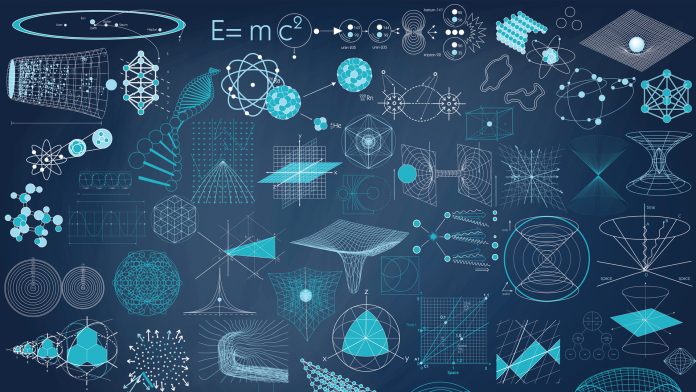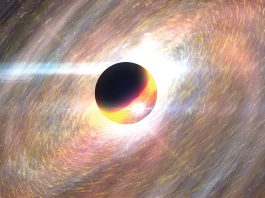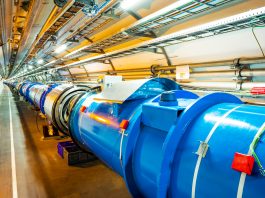Professor George W.S. Hou from National Taiwan University describes his journey in particle physics, from Belle at KEK to CMS at CERN.
Taiwan was handed over to Japan in 1895 after the Qing Dynasty lost the first Sino-Japanese War. Taihoku Imperial University, the predecessor of National Taiwan University (NTU), was founded in Taipei in 1928. Bunsaku Arakatsu was appointed to the first Physics Chair. Audaciously, in 1934 he performed the first man-made nuclear collision in Asia, right after the Cockcroft-Walton experiment in Britain. Achieving this feat, he was called back to Kyoto, showing the outlier nature of Taiwan at the time, and in general.
Before it all
This is the story of the founding and maturing of an outlier particle physics group, but let us start with something more personal.
I was trained as a particle theorist, and while I am certainly no (Enrico) Fermi, but I did have an early encounter with experiment. In spring 1981, during my first year at UCLA and taking a seminar class from Peter Schlein, he offered to send me to CERN for the summer, betting that I would stay on. For various reasons, I returned to UCLA to pursue theory, finishing a thesis entitled Aspects of QCD: Glueballs and Finite Temperature Effects, plus a few other things with Amarjit Soni (my junior advisor), from model building to CP violation and rare processes, and some collider physics. I committed to phenomenology during my first postdoc at Pittsburgh and went on as a Wissenschaftlicher Mitarbeiter at MPI (Munich) and Wissenschaftlicher Beamter at PSI (Switzerland). I went to PSI in 1989 for the proposed B facility, but the project was cancelled two weeks after my arrival, so I returned to NTU, my alma mater, in 1992.
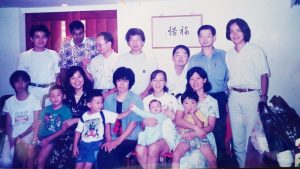
As a phenomenologist, I needed to talk to experimentalists. Asking a few colleagues, I got a nonstarter message: ‘For someone senior, why would he come?’ And ‘For someone junior, what would he do?’
In Montreal in May 1993, Kazuo Abe asked me forthrightly in a conference setting: “You are George Hou; why doesn’t Taiwan join the KEK B-factory?” We then went off for lunch, but it made me think. That summer, the death of SSC was announced. Seeing the numerous postdocs of Academia Sinica in CDF, I worried about their future.
The calling
The ‘calling’ brewed in me. There is a concentration of B theorists like myself in Taiwan but I still yearned for experimental colleagues at NTU. In December, I called a consultative meeting of experimentalists from Academia Sinica (AS, in CDF) and National Central University (NCU, in L3) with B theorists, and received encouragement. I persuaded a new junior faculty at NCU and, with the help of Pauchy Hwang, invited a senior Los Alamos scientist to visit for a semester, and a proposal was filed in February 1994 to the funding agency, NSC. In March, the Spokesperson of BaBar passed by; in April, a high level KEK delegation visited. Taiwan signed on both LOI’s, as a decision was not yet made.
For Belle, we had signed up for RICH, the particle ID detector. By July, however, RICH was deemed infeasible during the Belle General Meeting (BGM). I passed by PSI to consult with my friend, Tatsuya Nakada, who gave me sound advice and a real suggestion: “For a new startup HEP group, you should start small, but have your own hardware,” he said. Taking out the PSI B facility design, he suggested a small angle Forward Calorimeter – a full subsystem. I wrote to Fumihiko Takasaki about the space in front of Final Focus magnet (Interaction Region, or IR, of the KEKB accelerator), and he responded enthusiastically. Checking with BaBar that the region was taken by permanent magnets, this and other reasons set the course for joining Belle.
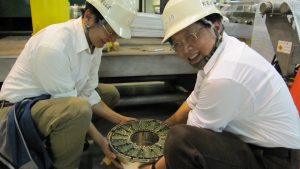
Belle: EFC
The feasibility study project started in August 1994 – NTUHEP’s t0. In October, with a small team, we presented the case for the SiW design for the Extreme Forward Calorimeter (EFC) in Nagoya; the Belle Executive Board (EB) accepted it to the TDR. We then managed to persuade NSC to more than double the budget within the project year. It helped to have a prominent B theorist as the Panel Chair, and our drive was noticed at the NSC.
In preparation for the arrival of the senior physicist from Los Alamos, I persuaded my theory MS student to switch to experiment, and an Indian postdoc who graduated from KEK also joined us. Fortuitously, two outlier universities gained three HEP faculty, and all were willing to help! With this research group, we found that radiation-hard BGO could have better cost/performance than SiW, which became the drive at NTU, testing many aspects of radiation hardness. By early 1996, we recruited a very experienced Japanese researcher and the team at NTU grew, adding students and postdocs. Conducting test beams for both BGO and SiW designs in the summer of 1996, our own ‘unbiased’ review recommended BGO for reasons of ease, cost, manpower and associated time pressure.
Back in the spring of 1995, I had managed to push through regular faculty offers to both the senior and junior co-investigators on the 1994 proposal. I had thought ‘mission accomplished’, and that this had solved the chicken and egg problem noted back in 1992. Alas, when the ‘catalyst’ (myself) got burnt in the next two years – by 1997, neither offers were taken up – one knows that the ‘formula’ has gone awry. Fortunately, we were able to build up our team by taking on more students. We pushed for one replacement faculty in 1997, and a second one for analysis in 1999. With the situation stabilised, the group scrambled to complete the EFC. Besides the design and construction of a full subsystem, we also had to secure the procurement and QC of BGO, which was sourced from Novosibirsk.
The BGO design of EFC had been approved by the Belle EB in October 1996, which asked EFC to take part in KEKB beam commissioning, i.e. it had to be ready by the summer of 1998; KEK offered to cover more than 1/3 of BGO costs. Though often squeezed between a rock and a hard place, but thanks to camaraderie, we delivered. With no lack of drama – the Zero Degree LuMi (ZDLM) was semi-blinded by a beam accident – partial EFC saw beam-beam collisions in late March 1999 (ended by an earthquark!), and I was relieved that we were now ‘a success’. We had to complete and install full EFC before summer.
Rising analysis powerhouse in Belle
Building hardware is necessary for any experimental HEP group, but a main purpose is to gain entry into physics analyses.
For whatever reasons, I was appointed to the Rare Decay Convenor in early 1997. But before long, I convinced the Belle management to merge this group with Direct CP Violation (DCPV, or CPV in decay), arguing that DCPV is necessarily rare; this DCPV/rare physics group started the Belle tradition of two convenors per physics group. To train myself, I wrote to the spokesperson of the CLEO experiment at Cornell to join their meetings as a visitor. This lasted from September 1998 until around 2000, for which I am grateful.
We did analysis simulations alongside EFC construction, and NTU added a faculty in 1999 for analysis. But will we be able to swim in the competitive environment that is HEP? Again, I am grateful for the friendly environ nurtured by KEK, much like at CLEO. Eyeing for DCPV eventually, we bravely took up two body hadronic decays with π0, η/η’, ω0 in final state, i.e. involving photons. Playing supporting roles initially, by 2001 we picked up indications for colour-suppressed B0 → D0π0 and similar modes, as well as rare 3-body pp(bar)K. We threw in manpower to study six modes for the former and reinforced the latter. Both discoveries – the rates were unanticipated – were published in Phys.Rev.Lett. in early 2002, and that gave us confidence. The B → pp(bar)K discovery followed my suggestion, with Amarjit Soni, that three body, charmless baryonic B decays would emerge before two body modes, unlike the mesonic counterpart. However, the specific final state was not predicted.
To make a long story short, with physics insight and good timing in a congenial collaboration, and with persistence, by 2004, the NTU team saw evidence for DCPV in B → Kπ decay, which was published in Phys.Rev.Lett.; combining with BaBar, DCPV in B decay was discovered just three years after the observation of time-dependent CPV (the latter led to the Nobel Prize for Kobayashi and Maskawa in 2008). But, already in 2004, data hinted at a difference in DCPV between B0 → K+π− and B+ → K+π0. Pursuing this, Belle published a Nature Letter in 2008 (three out of four leading authors from NTU), demonstrating the ‘∆AKπ’ DCPV difference, which was not expected by theory. Could this be New Physics?
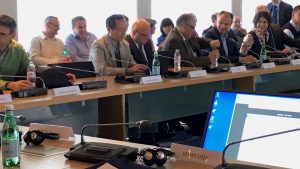
For a relatively small group which started from zero, up until 2008, we published about 20% of Belle physics papers! Also, our Belle analysis star, Kai-Feng (Jack) Chen, received the first ever IUPAP Young Scientist Prize in Particle Experiment at ICHEP2008 held in Philadelphia.
CMS build-up
In the late 1990s, well after the SSC was buried, the LHC was taking shape at CERN. The HEP groups from AS and NCU jockeyed for NSC to support Taiwan’s participation.
I had held the principle that, before I have the first bird firmly in hand, I would not ‘eye a second’. After the stressful weeks in March 1999, when (partial) EFC finally saw first KEKB beam collisions, I rushed to the LHC agenda. AS continued with optical link for ATLAS, but NCU took part in CMS Preshower, which consists of two layers of silicon in front of the ECAL endcap. We joined forces with NCU: they do sensor production, and we the Motherboards (MB). The Preshower had some parallel with EFC.
I do not think I was so wise, but this worked out perfectly for our Belle effort. The MB used many ASIC chips, so production would not be early. This allowed us to focus on Belle analysis (besides contributing to SVD2, the vertex detector). For some time, we put an engineer at CERN, and a hardware person managed the MB effort back at NTU.
In 2007, as LHC collision seemed imminent, I recruited back from CDF my former student and stationed him to CERN as local leader to run the Preshower. After a last-hurrah search in 2008 at Belle for the ‘Yb’, the bottom counterpart of Y(4260), I pivoted to CMS for the new challenge of the installation/integration of the Preshower, sending in experienced personnel and students, as well as an intense funding effort.
One shock in 2008 to 2009 was our misconception of CERN ‘accounting’: hardware personnel costs are not counted (unlike in the USA). So, attending the LHC Resources Review Board (RRB), I discovered that we ‘owed’ CERN a considerable sum! Fortunately, this was resolved by 2009, but I learned that funding is king at CERN, so I filed an Academic Summit Proposal (ASP). The theme is to search for fourth generation (4G) quarks, which is based on my work that ∆AKπ can be explained by 4G effect in the ‘Z penguin’, and my subsequent observation in 2008 of sufficient CPV for the baryon asymmetry of the Universe! Helped by miracles such as the Eyjafjallajökull volcano eruption (!) in April 2010, NTU joined the Pixel Phase I Upgrade as the CERN/TW centre for Module Production; the prestigious ASP grant came down!
But the discovery of the 125 GeV H boson in 2012, the crown jewel of the LHC, spelled ‘No 4G’ on the wall. The only consolation was that nobody else discovered any New Physics.
Focus CMS
Despite not finding 4G quarks, our effort was successful. We quickly pushed the limit, and also explored flavour-changing t → cZ decays, producing the world best limit in 2014 (our earlier paper was ‘mentioned’ on the TV series, The Big Bang Theory). Our 4G effort involved also Q → qZ, qH searches, paving the way for vector-like quark searches, which became in vogue after the Higgs boson discovery, and helped the branching out of the ‘B2G’ physics group from the ‘EXO’ group of CMS.
Our 4G effort eventually ran out of steam, but our CMS analysis expanded from EXO and B2G to involve: TOP, e.g. t → cH, top CPV, and t → cZ(′) searches; BPH (B physics), e.g. Bs, Bd → μ+μ− (co-ordinating a joint Nature Letter with LHCb in 2015), and B → K(*)μ+μ− angular analysis; SMP (Standard Model physics), e.g. underlying events and photon plus jets; HIG (Higgs physics), e.g. VH (H → γγ) and high mass X → γγ searches.
Worthy of special mention is keeping the torch on hardware projects at CMS.
Our involvement in BPix1 (Barrel Pixel Phase I Upgrade) as CERN/TW center for module production gained us visibility. By 2013 to 2014, several leadership members of CMS pushed for the High Granularity Calorimeter (HGCAL) to replace the entire calorimeter endcap with largely silicon-based detector design. Noting our experience on Preshower and BPix1 module production, we were offered a Module Assembly Center (MAC) around 2014, which started our funding drive with NSC (became MOST ca. 2016). This was certainly not easy, as the total funds were three times that of BPix1, and only by 2018 did we settle the funding support, with MOU addenda signed subsequently. This secured our CMS hardware funding for a decade towards High-Luminosity LHC (HL-LHC), which would run until the later 2030s.
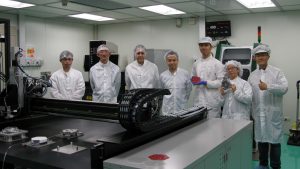
When BPix1 module production was in preparation at CERN, we had the foresight to secure, in the early 2010s, a clean room for a future Si-Lab in the new AstroMath building nearby the physics building. Luckily, this clean room is just the right size to host the HGCAL MAC, and is now already in operation. It has evolved further into a joint facility for Taiwan HEP’s future.
In the process of expanding on analysis and hardware, NTUCMS grew into four regular faculty and two research faculty, and constitutes the largest group of NTUHEP. There are two faculty on Belle II, and one faculty pursuing the kaon and neutrino frontiers.
Riding into the sunset
So, my job at NTUHEP can be said as ‘done’. But, as the senior member, I have perhaps earned the right to pursue my last hurrah.
Though depressed by not finding 4G quarks, 2017 was an epiphany year. Back in 1991, I pointed out t → ch (h would now be the discovered 125 GeV boson) as the leading probe for extra Higgs bosons that possess extra Yukawa couplings. In 2017, I discovered that an extra top Yukawa coupling, dubbed ρtt, together with the known top Yukawa coupling, can robustly drive EWBG (electroweak baryogenesis), while the extra Higgs bosons of this ‘two Higgs doublet model’ (2HDM) can provide first order electroweak phase transition. This is the Holy Grail and more complete than my 2008 4G insight. I then understood that the newly emergent ‘alignment’ phenomenon, that the h boson is so close to the Standard Model Higgs boson, can be realised quite well in this ‘general’ 2HDM (g2HDM). I enjoyed exploring the production processes of the sub-TeV extra Higgs bosons for several years.
During 2020, I grew a small group to pursue this direction at CMS, riding into the sunset.
Please note, this article will also appear in the sixth edition of our quarterly publication.

